How to Write a Research Paper (The Amy-Creighton Guide)
by wenzelamy20 in Teachers > ELA
329 Views, 1 Favorites, 0 Comments
How to Write a Research Paper (The Amy-Creighton Guide)
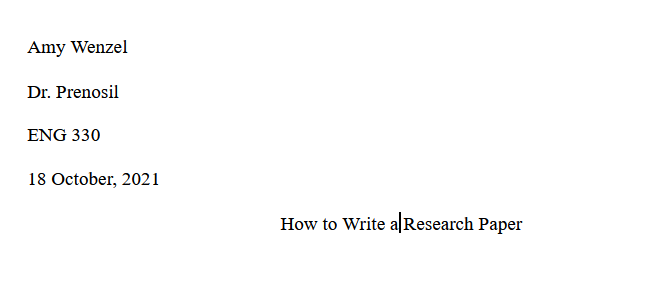
So you're graduating from the simple 5 paragraph essays taught about in middle school and want to learn how to write a full on research paper. Here's a guide with instructions as well as a few special tips and tricks I've learned in order to survive my English major classes.
Keep in mind, this instruction is meant for those who are aware of the basic process of writing 1-2 page essays and who go to Creighton University.
Supplies
Computer / Phone / Electronic Writing Instrument
Step 1: Decide on Your Topic
This is the most important step. You can't write a paper without knowing what topic you're writing about, after all. The first thing you want to do, therefore, is pick a topic. Obviously depending on the class you might have different options available so keep in mind any personal/class requirements needed for your paper. Try to pick something that interests you if possible as it will make research and the overall process of writing much more enjoyable (trust me!).
Step 2: Start Your Research
.PNG)
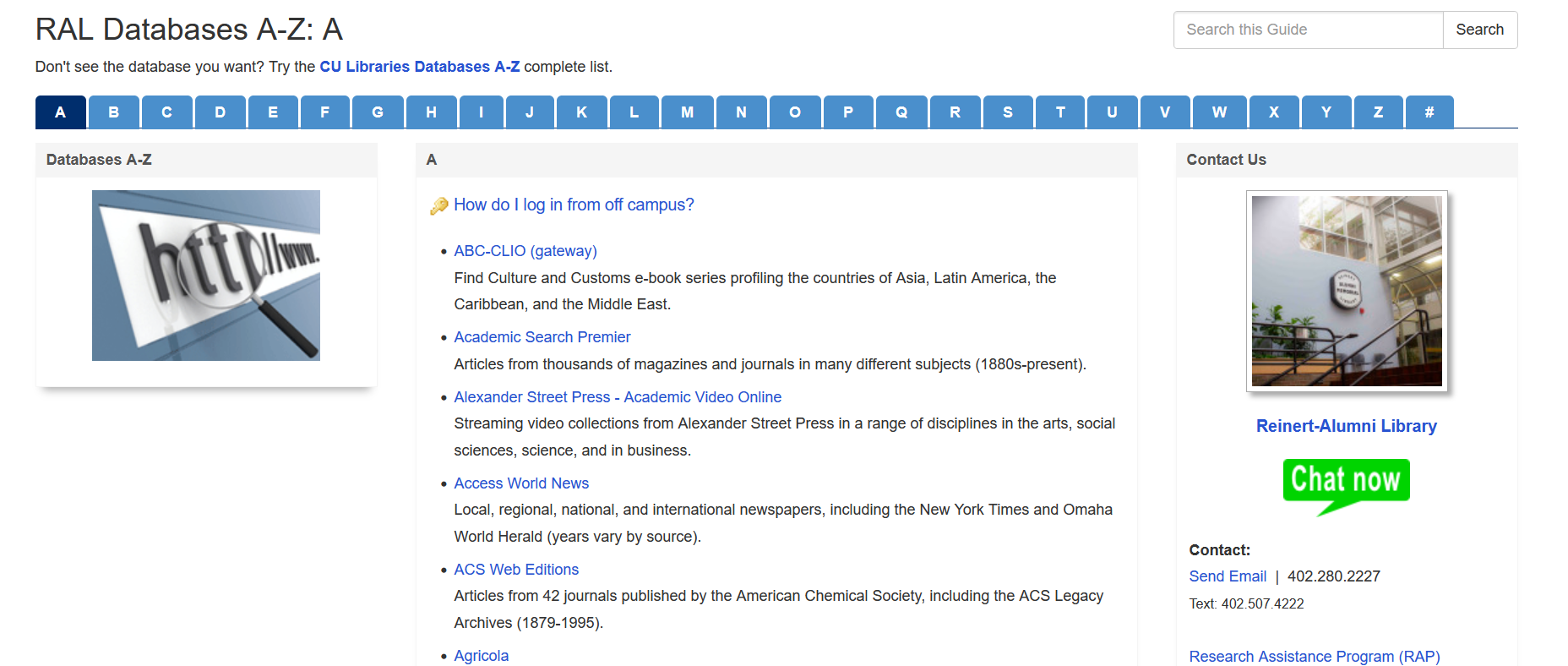.PNG)
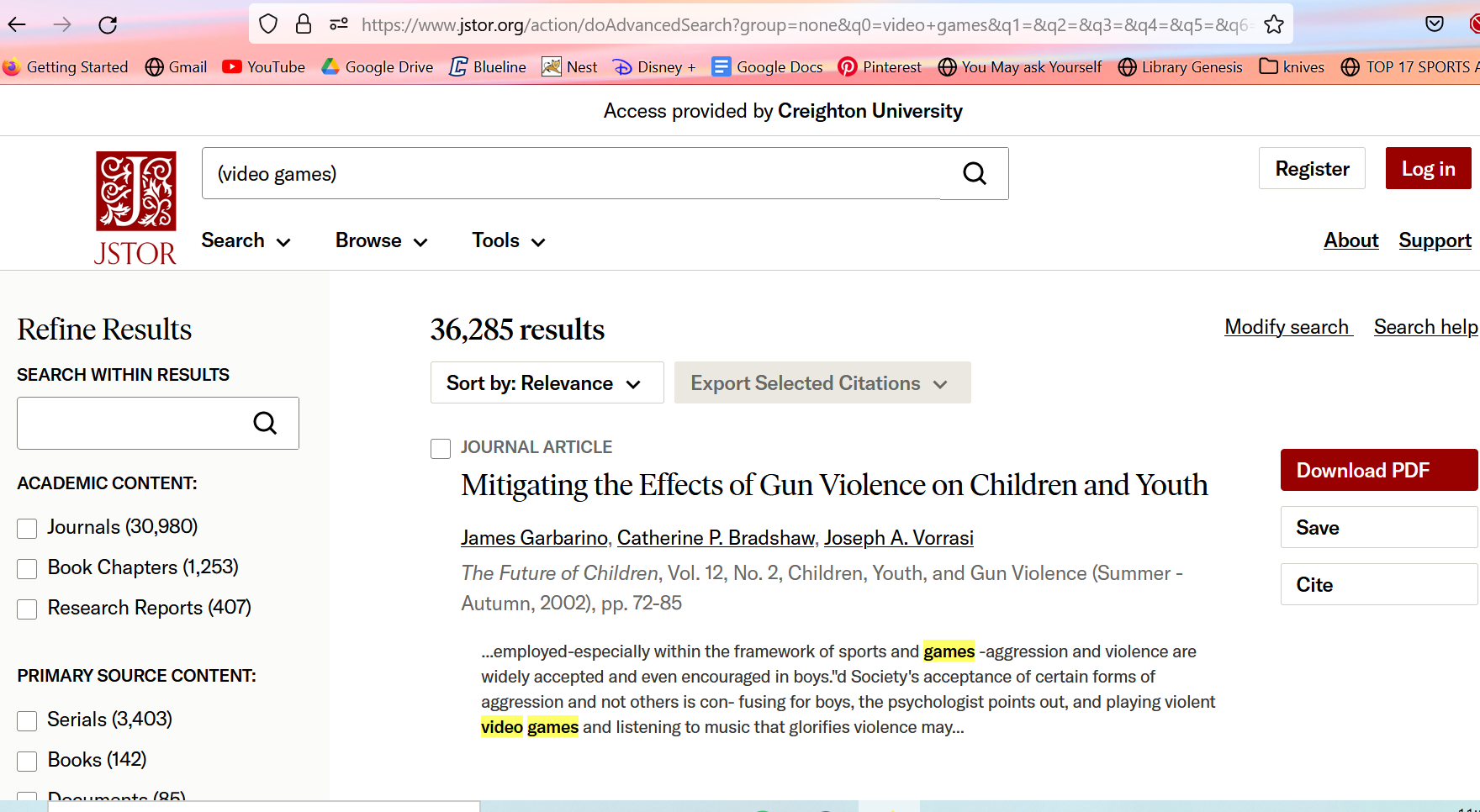.PNG)
Once you've picked one or a few that interest you, you'll want to start research.
Go to Reinert-Alumni Memorial Library website and click on their list of databases to get a full list of research databases for articles, books, newsletters and more. From there, find your database of choice (I prefer JSTOR, MLA International Bibliography, or Project MUSE).
Click on your database of choice and start researching!
Ok welll, it's not that easy. If your topic is still broad, you'll probably want to start with broad research so you are then able to narrow it down to something more specific. For example, if you want to write about video games, specify what about video games you want to write about. Do you want to write about how they affect youth? Or maybe how video games take influence from other media? Start with "video games" as your keyword search term. Then if you find you want to research video games and the effects on youth, start adding different words to your search in order to narrow it down.
After that, just start collecting what articles/books/etc you find helpful to your paper.
Step 3: Open a Document

We're getting close to starting the actual paper, so now you'll want to have a document open. This might be Google Docs, Microsoft Word, or any other writing program of your choice.
Now, change your font to Comic Sans. Or if you hate that, a different font that is more relaxed and not as professional. This might seem silly, but it's actually a lifesaver for two reasons. One, it'll make it easier to write your rough draft. The second reason I'll get to later in the process.
Step 4: Outline
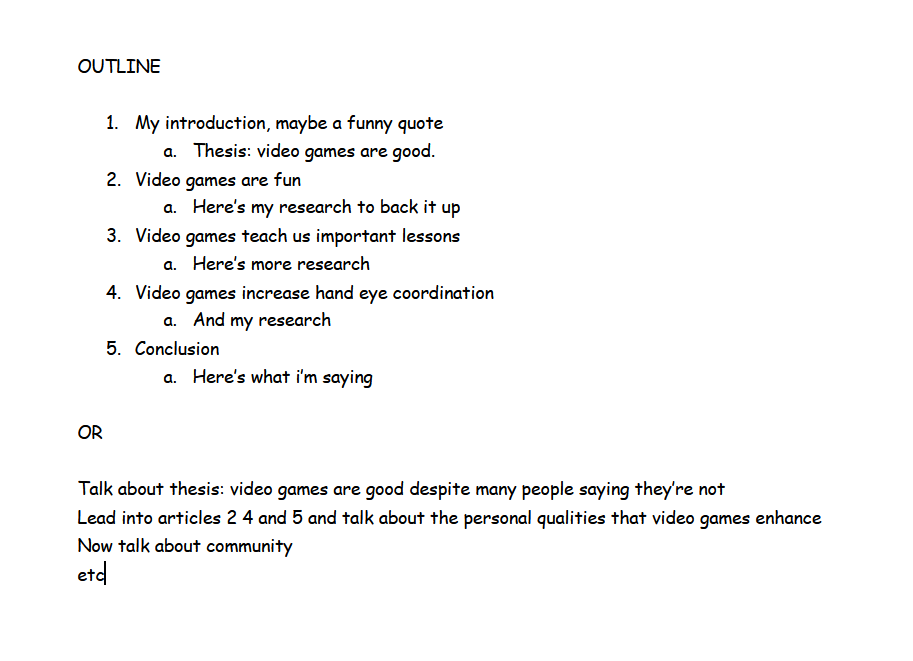
This outline can be as detailed or as simple as you want it. What is most important about it is that you get the main points of your paper down. If you want to organize it like an actual outline, that's great. If you don't want to, that's just as well. The outlines don't need to be 1:1 on how many paragraphs you will have; I tend to write outlines with 5 parts, but then split those parts into multiple paragraphs and pages.
The outline can be as bare bones as you want, just make sure it has enough so you can base your paper around it.
Step 5: Write Your Rough Draft
Now you can start writing. Going off your outline, start filling in the details you left out. Remember, this is a rough draft. If you need to leave sentences unfinished or spelling mistakes in the writing that is okay. Just remember that you need to fix it later. If you know where you want your sources to be, just put a sign to remind yourself which source belongs where. That way you can come back for those later rather than mess up your writing groove.
Step 6: Add Sources
Now you've written your rough draft, add your sources! If you've made a note of where to put them, good. If not, no worries, you might just have to read through more. At this point it's still okay if the sources don't entirely flow with the paper. You'll see why in a second.
Step 7: Rewrite Your Paper
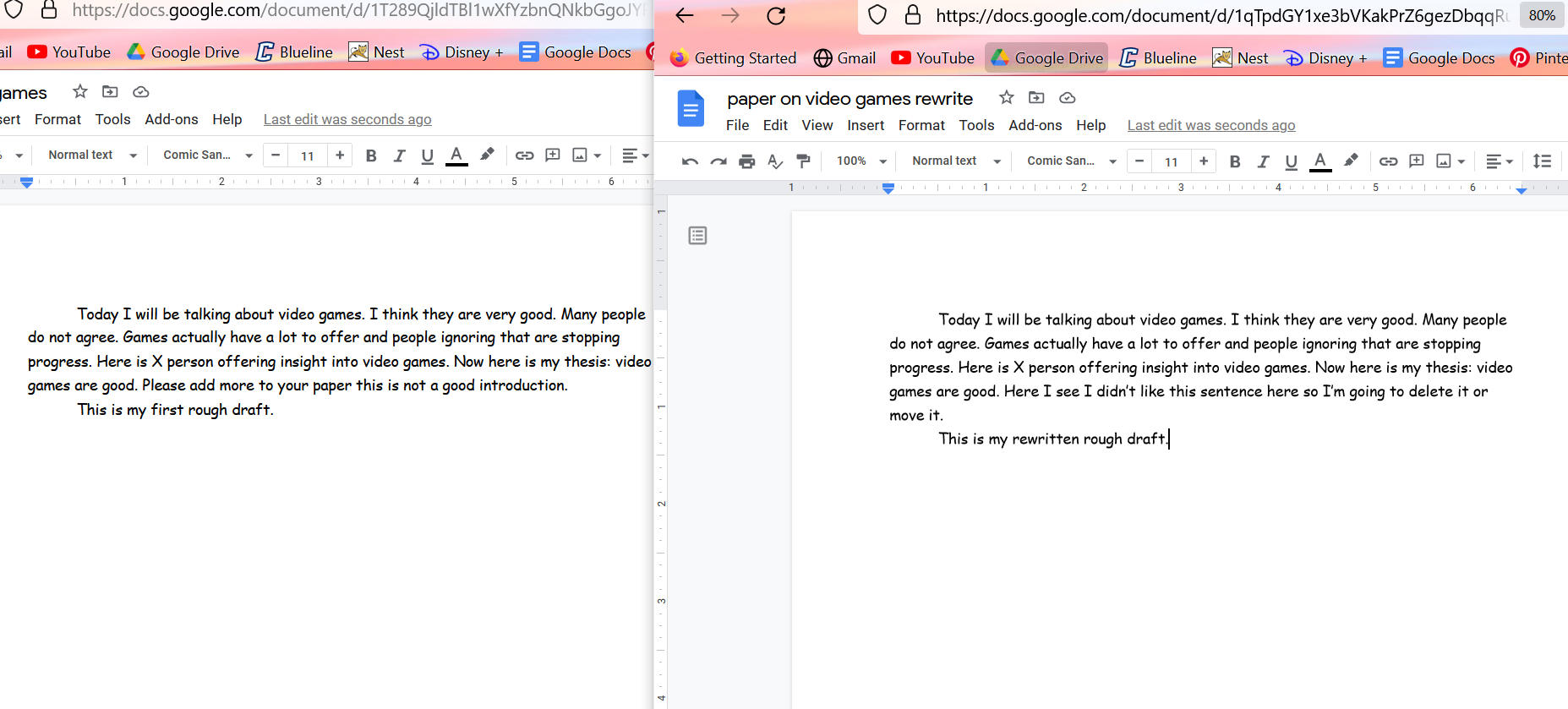
You heard me. Rewrite your paper. The whole thing. Pull up your rough draft on either one side of your laptop or a different device if needed and then pull up a new document next to it. Now copy the entire thing down. As you are copying, keep your mind on what you are writing. Here you will see where things flow, where things don't fit, and where things need to be moved. This is your second draft, which for me is the final draft. However you can do this as many times as you see fit.
Step 8: Edit

Now you're onto your final draft. However, you still need to edit. Here is where you change the font back to Times New Roman (or another professional font of your choice) and adjust the size of the words as needed. The font change will help you catch mistakes in spelling and grammar easier because you are reading your words differently in the new font. I also recommend reading your paper out loud to catch mistakes.
Step 9: Title
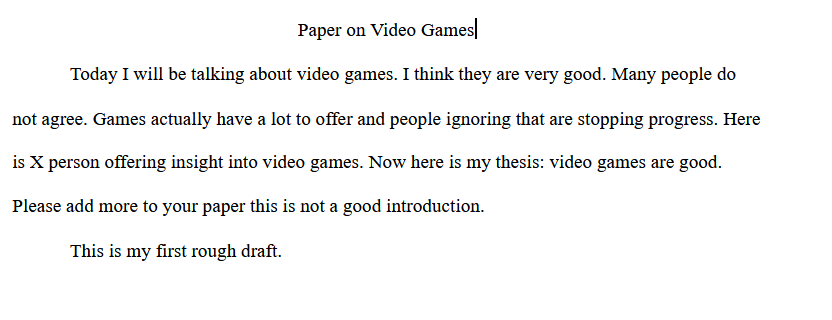
Add a title. Now that you've written the whole thing you can effectively title your paper in a way that will give insight into what you are writing on.
Step 10: Format
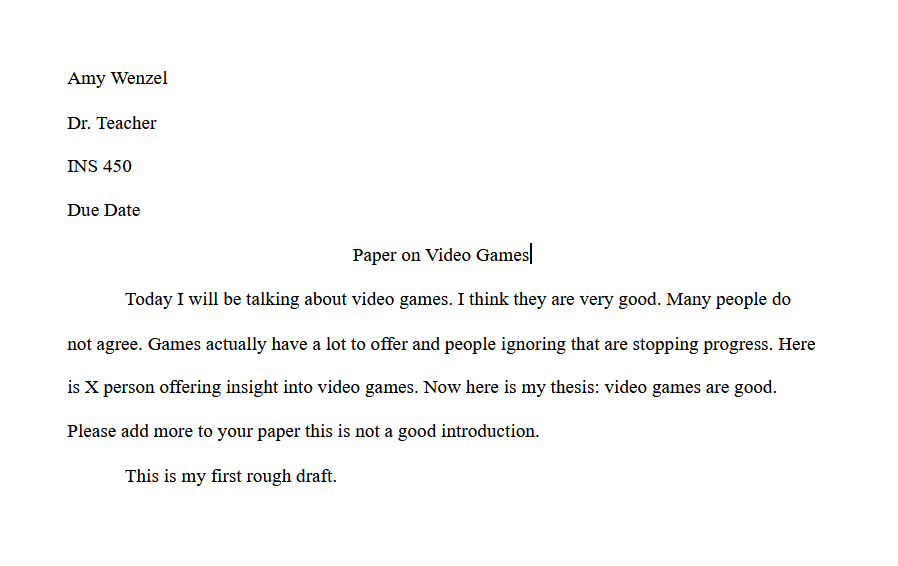
Now format everything the way your professor wants it. Most prefer MLA format, but you should be able to tell from your syllabus. Make sure to add your name, your professor's name, the due date, and anything else necessary.
Step 11: Works Cited

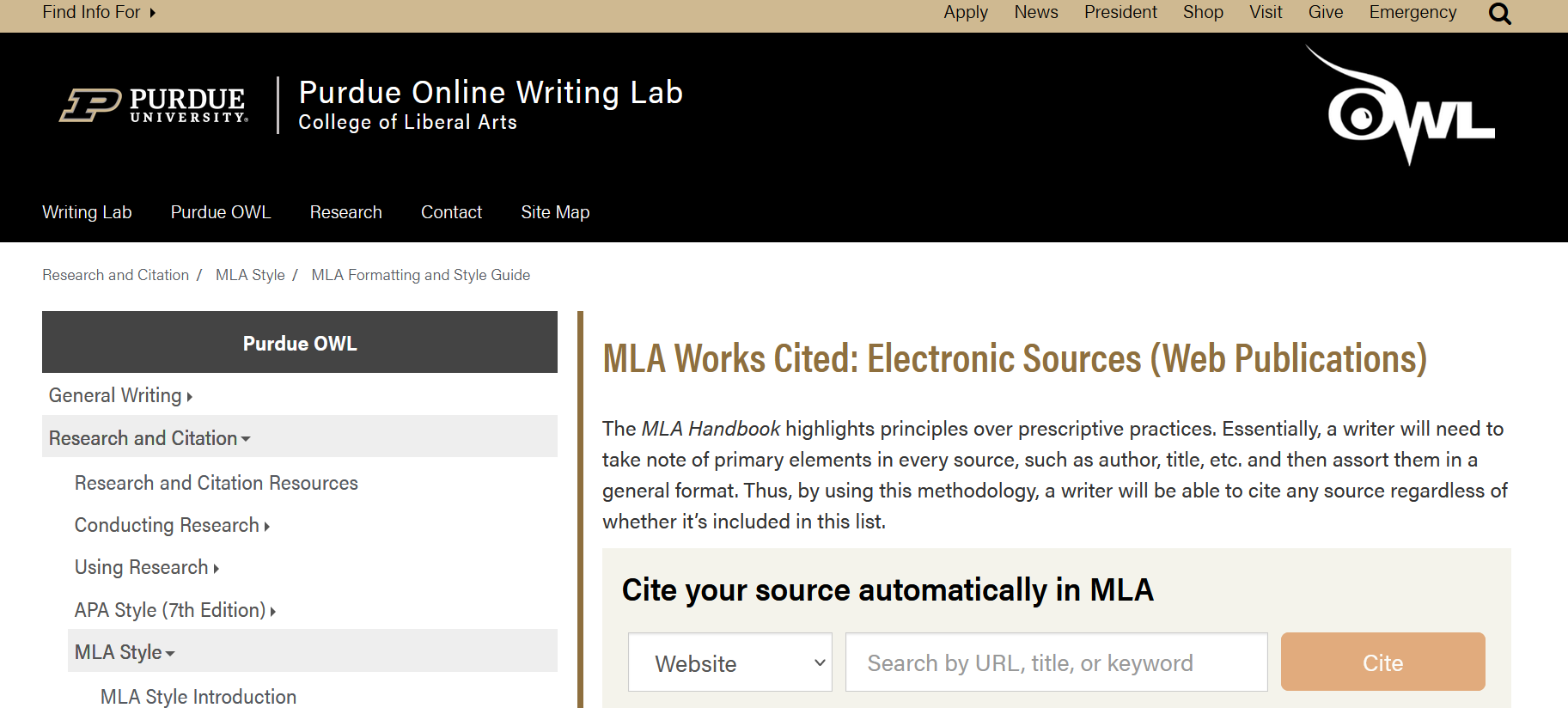.PNG)
Before you're done, you'll have to add a works cited of some form. If you need help formatting it, check Purdue Owl. I use it for all of my papers.
Step 12: Turn It In!
Most professors at Creighton prefer online turn in so check your Blueline page for a link. Otherwise, print it out and bring it to their office or to class. Good luck!